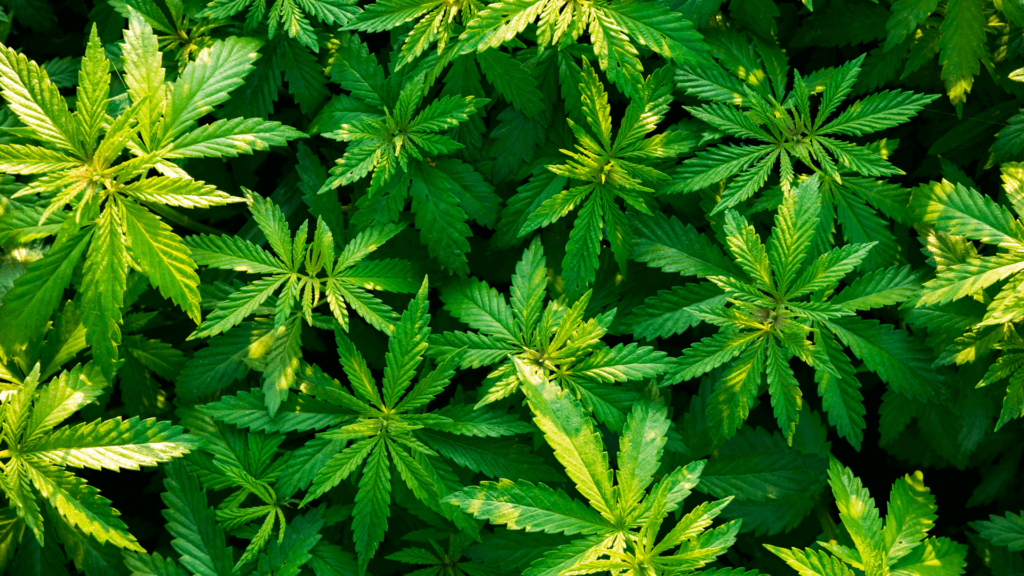Cannabis plants require great care. Without the proper maintenance and care, you risk a nutrient-deficient crop that doesn’t produce high-quality weed or, worse yet, doesn’t produce any buds.
Fortunately, growers have been collecting data for decades on cannabis plants, cannabis plants growth stages, and best practices. More specifically, what deficiencies cannabis plants struggle with, how it looks, and how you can fix it.
Here is everything you need to know about nutrient deficiencies in marijuana plants. Use this guide to optimize your cannabis plants and guarantee high-quality crops.

Marijuana plants, just like any other living thing, require specific nutrients to grow well. When these nutritional needs aren’t met, cannabis plants become susceptible to deformities, mold, and pathogens.
Factors such as soil degradation, extreme pH levels, and nutrient lockout can harm your crop and waste resources.
The good news is that there are proven methods to identify and fix nutrient deficiencies in cannabis.
By staying observant and recognizing the signs early on, the process of identifying and addressing deficiencies becomes straightforward. And the more familiar you become with these issues, the better you’ll get at preventing them in the future.
Here is a comprehensive guide on the most common nutrient deficiencies in marijuana plants. We’ll take a look at their role in the cannabis plant life cycle, symptoms to look out for, and how you can fix the deficiency.
Nitrogen is one of the most essential nutrients in cannabis plants and the most frequently deficient.
Nitrogen is a mobile nutrient that can be translocated from older leaves to younger tissues. Mobile nutrients are crucial in maintaining overall plant health and growth because they can be redistributed within the plant to support new growth.
Nitrogen deficiencies result in low chlorophyll molecule production, the green compound in plants responsible for photosynthesis.
This causes cannabis leaves to turn yellow and fade and to curl up and inward. The deficiency also stunts plant growth, so you’ll notice your plants stagnating, specifically during the vegetative stage.
As the deficiency progresses, lower-rung leaves will dry and fall off, the top leaves will become virtually colorless, the plant will stop growing, and purple spots will appear along the leaves, branches, and stems.
When it comes to nitrogen deficiency, prevention is key. So, practice better watering – don’t waterlog your plants.
Ensure the soil pH is correct so it doesn’t interfere with nitrogen absorption.
A lack of nitrogen can also be caused by too much calcium in the soil, so test your soil for calcium surplus.
Phosphorus is another mobile nutrient like nitrogen. Without enough phosphorus, cannabis plants struggle to grow or produce buds. Even if the plant does produce buds while deficient, the trichomes will be lacking and low quality.
Lower rung leaves turning blue, brown, and gray, as well as purple stems, are all clear indicators of a phosphorus deficiency.
As the problem progresses, the color will spread to the top of the plant. Other leaves and growth will also turn brown and fall off.
Check the pH. Phosphorus deficiencies are common in soil over 7.0 pH. Also, ensure you aren’t overwatering and water-logging your plants.
Phosphorus, while mobile, often bonds with other soil compounds. Young plants can struggle with this dense absorption. So, add phosphorus-solubilizing bacteria and enzymes to increase absorption.
Magnesium is an essential nutrient with a host of important jobs.
Magnesium deficiency shows up on older plant leaves during the vegetative stage. The spaces between the plant veins will start to yellow. This will continue to spread across the entire plant.
As the process progresses, sections of the plant dry and fall off, while the rest turns yellow and enters a sort of plant hibernation. In other words, no growth and no bud production.
An acidic pH and an excess of calcium and potassium can lower absorption. This is the most common cause of magnesium lockout.
So, test your soil, check the pH, and determine which nutrient in excess is lowering the magnesium absorption.
As far as nutrients go, few are as versatile and necessary as potassium.
Potassium deficiency can be hard to catch because some leaves might look very healthy. However, if your plant has overgrown green leaves with a dull shine and older leaves that are yellowing and burnt-looking, it’s a potassium deficiency.
Stunted growth during this period is also a clear indicator of potassium deficiency.
As always, check the soil pH. Ensure the pH is correct for your crop.
Next, add a potassium supplement to the soil. Your local gardening or grow store should have potassium supplements that are safe to add as a potassium supplement.
Lockout is also a common problem, especially if there is too much calcium or magnesium in the soil. Always ensure you add soil nutrients appropriately because this can stop the absorption of other nutrients like potassium.
Zinc deficiencies are on the rarer side and mimic a lot of the symptoms of nitrogen deficiency.
Chlorophyll production difficulties caused by low zinc are most visible in new growth, with yellowing between the leaf veins.
As the deficiency develops, leaves will turn yellow, and plant matter will die and fall off. Stunted growth will keep the plants small or create abnormal bud growths. You’ll also notice wrinkling on any new growth that manages to pop up.
Lastly, zinc deficiency plant leaves turn sideways. The top of the leaves will turn away from the light source to the side.
Zinc deficiencies are more common in dry climates with a higher, alkaline pH.
First, check that the soil pH is correct and that there is no excess phosphorus. If those two are perfect, check the roots. Make sure you aren’t overwatering your plants. You can also add a mild zinc supplement to the soil to encourage proper growth.
Calcium is an immobile nutrient that helps plants reach their full potential. Unlike mobile nutrients that can move to areas where they are needed, immobile nutrients stay where they were initially absorbed.
Symptoms of deficiency in immobile nutrients often appear in the new or younger leaves, as these nutrients are not easily moved to older tissues.
The most common symptom of a calcium soil deficiency is yellow spots on leaves. The yellow areas are usually bordered by dry, brown leaf matter.
Lower rung leaves tend to curl and wrinkle. Root development is also stunted because calcium-deficient roots rot at the tips.
Calcium absorption is lower in acidic soil, so ensure the soil pH is correct – between 6 and 7, depending on your crop.
If fixing the pH doesn’t help, add a calcium supplement to the plant soil. There are chemical supplements, which you can add to water, and natural options, like oyster shell flour, which you add straight to the soil.
Sulfur is an essential nutrient for plant growth, and it plays several important roles in various processes.
The first symptom of a sulfur deficiency is lime green leaves. These leaves will look much lighter than other healthy leaves. After turning bright green, the leaves slowly lose color, turning lighter until they hit a bright yellow. From here, sulfur-deficient leaves dry and fall off.
Ensure the soil pH is correct and you’re not drawing the plant roots. Next, add a sulfur supplement to your growing medium. Adding sulfur to maximize growth during the vegetative stage is essential.
While iron is not a common deficiency, it can cause many essential processes to fail – a devastating blow for any grower.
Iron deficiency makes itself known quite early as yellowing on younger leaves. As the lack progresses, the yellowing continues to spread through the rest of the plant. The only parts that stay greenish are the veins.
Ensure the pH isn’t too high and check for waterlogging. Excess amounts of phosphorus can also dilute iron absorption, so check for that. If the issue persists, flush the soil and add calcium, magnesium, and iron supplements to your newly flushed soil.
Manganese is an essential micronutrient that plays several important roles.
Symptoms appear first on new growth, with yellowing between plant veins, followed by leaf decay. The necrosis then spreads to the rest of the plant, leaving the plant veins and leaf borders green.
While manganese deficiencies are rare, they are often caused by an excess of iron in the soil. So, ensure the soil pH is optimum and that there isn’t too much iron inhibiting manganese absorption. Correct nutrient levels for macro and micronutrients are the only effective way to treat manganese deficiencies.
Molybdenum is only used in trace amounts by cannabis plants but is still very necessary.
Molybdenum deficiencies are caused mainly by nutrient lockout and cold weather. Symptoms first appear on older leaves as yellow discoloration between plant veins. In this case, the yellowing will also appear concentrated on the leaf borders. As the deficiency progresses, leaves curl in on themselves and dry out. Most fall off.
Like the other nutrients on this list, Molybdenum needs the soil pH to be perfect, so test your soil and correct it if needed.
Molybdenum deficiency is also the result of too much sulfur in plant soil, so test for excess sulfur in your growing medium. Correct the base pH and nutrient levels; the molybdenum deficiency should disappear.
Throughout this article, we’ve mentioned nutrient lockout – but what is it?
Nutrient lockout is when your cannabis plants can’t absorb nutrients from the soil. The most significant nutrient lockout culprits are high or low pH and too much of a particular nutrient in the soil.
Sometimes, if there is too much of one nutrient in the soil, it can stop your cannabis plants from absorbing other nutrients. Soil pH also affects lockout because it lowers nutrient availability. Too high or too low, the plant roots won’t be able to find the nutrients they need from the soil.
Yellowing, plant necrosis, drying, and twisting indicate that some nutrients aren’t being absorbed from the soil.
If you identify the type of deficiency you’re dealing with, you can figure out whether it’s the pH or another nutrient that’s preventing nutrient absorption.
Prevention is the best cure, and nowhere is that more true than with cannabis plants.
Regularly check your soil pH. The exact pH might differ from region to region, but it should stay between 6 and 7. Anything above or below this becomes too alkaline or acidic. If the pH starts shifting in the wrong direction, use soil pH adjusters to fix it before it causes nutrient lockout.
It’s also important not to oversaturate your plants with nutrient supplements. Most grow mediums have all the nutrients your plants need. Adding nutrients when the soil doesn’t need them causes a surplus of certain nutrients, which can lower the absorption of other nutrients.
Instead, aim to keep the pH perfect and only add small amounts of nutrients when necessary.
The best way to prevent nutrient deficiencies is to maintain soil pH and use natural products.
Regularly check the soil pH and use adjusters to maintain the optimum levels. Flush your plants to remove excess nutrients when necessary and start fresh with natural supplements. Use natural supplements where possible.
While chemical additives aren’t harmful, too much can cause salt buildup and nutrient lockout. The salt buildup also impacts your final product, leaving a harsher taste and aroma.
Cannabis plants have complex internal structures that rely on a host of nutrients to nourish growth and THC production. Plants tend to yellow, dry, and die if these nutrient needs are unmet.
Fortunately, there are simple ways to recognize the deficiencies that growers commonly deal with and how to treat them.
To grow high-quality weed, you need to know what high-quality weed looks and tastes like. So, try Embarc today. Embarc offers high-quality weed, community, and culture at unbeatable prices.
